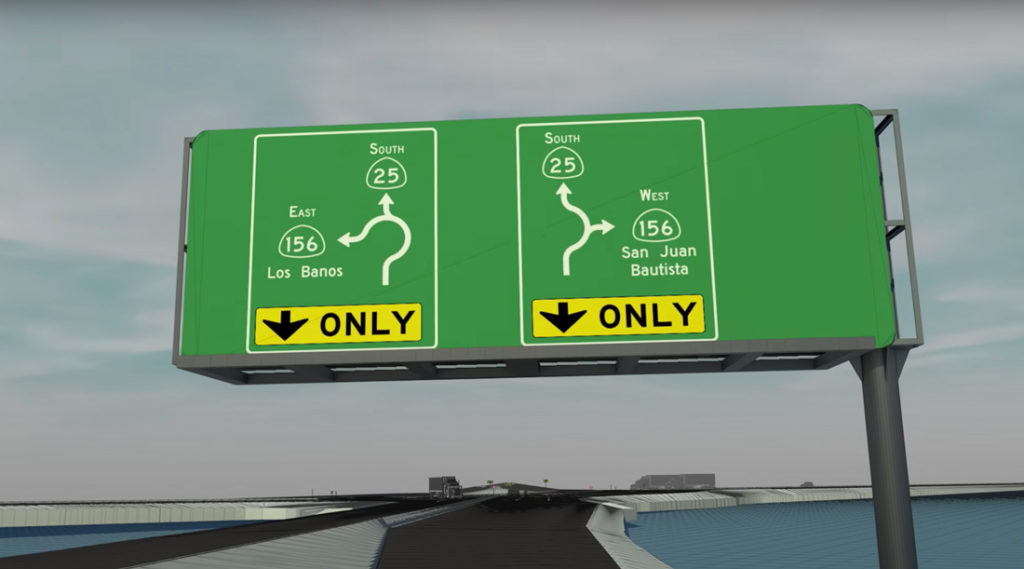
All lanes are now open at the new “turbo roundabout” intersection at Highways 25 and 156 in San Benito County. The California Department of Transportation released a how-to video on Youtube—in both English and Spanish—advising travelers how to approach and navigate the new intersection, which is the first of its kind in California.
The roundabout has been under construction for more than a year, and replaces the previous red-light control system at the busy intersection. Caltrans said the previous Highway 156/25 intersection configuration had seen twice as many collisions as similar intersections in California in recent years.
The new multi-lane roundabout with raised lane separators and abundant signage is designed to keep traffic flowing in all directions and reduce the number and severity of collisions, according to Caltrans.
In recent weeks, Caltrans crews have completed the project with final paving, installation of signs, striping final lane configurations and placing directional markings in the pavement.

All travelers are asked to slow down, adhere to the new signage, and remain alert. Caltrans said in a press release, “Travelers should continue to yield to vehicles already inside the turbo roundabout, enter the roundabout when there is a safe gap in traffic, and maintain an appropriate distance between their vehicle and others in the roundabout.
“A turbo roundabout is much like a regular roundabout but has additional safety features designed to reduce the potential for collisions, including three-inch lane dividers that guide users throughout the roundabout and discourage lane changes. Additionally, the turbo roundabout lanes have been designed to accommodate the largest trucks approved for highway travel.”
Caltrans posted a three-minute educational video describing how the new roundabout works, in English at http://tinyurl.com/5n6cn27p; and in Spanish at http://tinyurl.com/47snjxpm. The videos can also be found on the San Benito Council of Governments website at http://sanbenitocog.org/transportation-updates/.
The turbo roundabout project at Highways 25 and 156 cost about $10.9 million. The contractor for the project is San Jose-based Graniterock.








People using the road make mistakes (like speeding, running stop signs and red lights, turning left in front of oncoming traffic), always have and always will. Crashes will always be with us, but they need not result in fatalities or serious injury.
Modern roundabouts are the safest form of intersection in the world – the intersection type with the lowest risk of fatal or serious injury crashes – (much more so than comparable signals). Modern roundabouts require a change in speed and alter the geometry of one of the most dangerous parts of the system – intersections. The reduction in speed to about 20 mph and sideswipe geometry mean that, when a crash does happen at a modern roundabout, you might need a tow truck, but rarely an ambulance. Visit the Insurance Institute for Highway Safety or FHWA for modern roundabout FAQs and safety facts.
The FHWA has been saying for over 20 years that signal intersections have TEN TIMES the fatality risk of modern roundabouts.